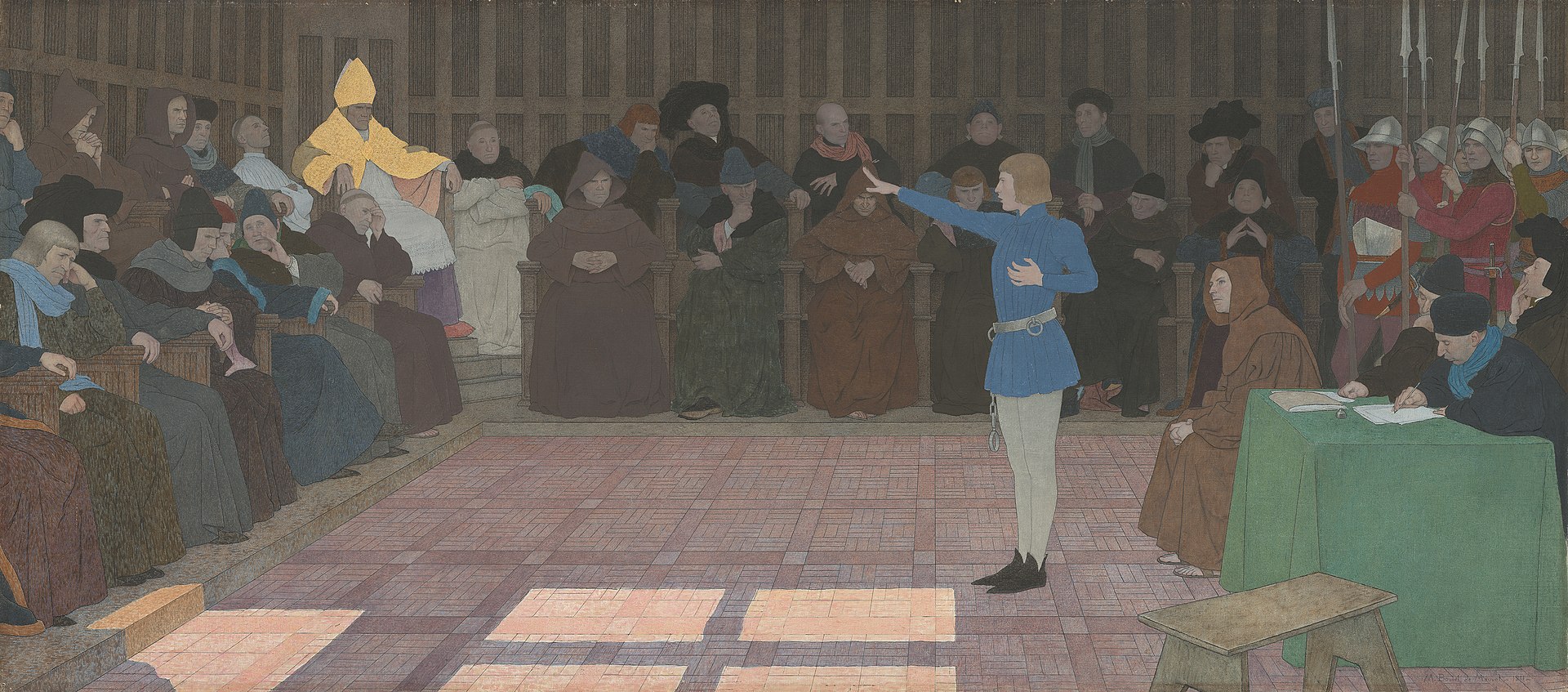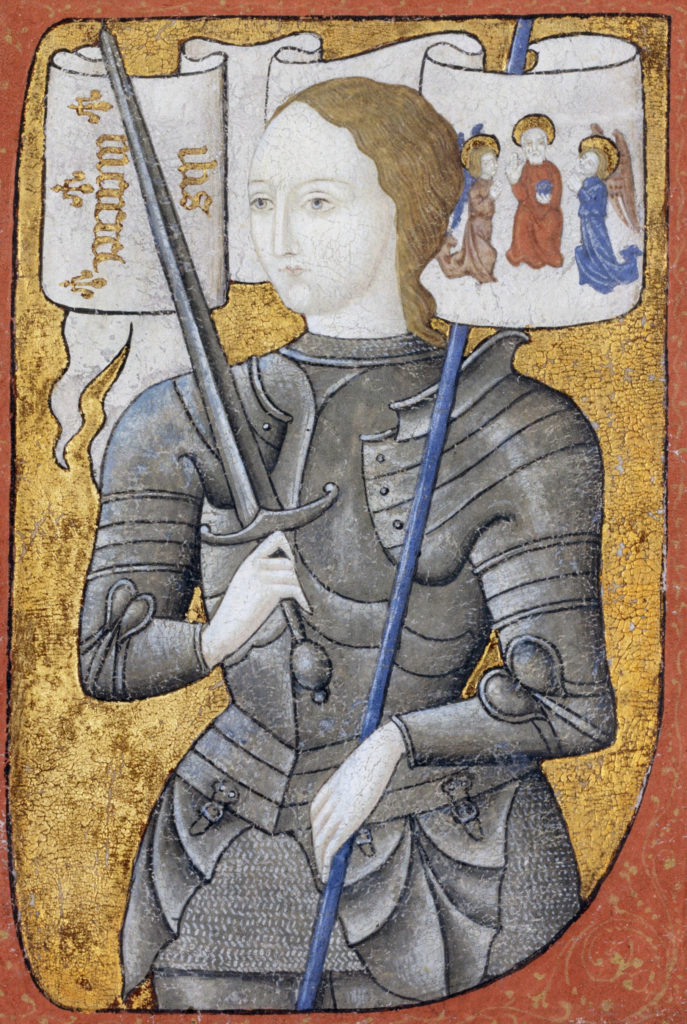After receiving a heavenly revelation, Joan liberated Orleans in 1429, and enthroned Charles VII as King of France. The next year, however, Joan was captured by the Burgundians and placed under the guardianship of John II of Luxemburg.
In July of the same year, Pierre Cauchon, the Bishop of Beauvais (and later the chief judge at Joan’s trial before the Inquisition), asked the Burgundians, in the name of the Prince of England, to grant him custody of Joan. Accordingly, on July 14, the Duke of Burgundy sold her to Cauchon for 10,000 pounds tournois.
Joan was accused of heresy and put on trial. The battle that Joan faced now was not against flesh and blood, but, as the Bible says, “against the principalities, against the powers, against the world rulers of this present darkness, against the spiritual hosts of wickedness in the heavenly places.” (Ephesians 6:12).
Joan jumping from the prison tower in Beaurevoir
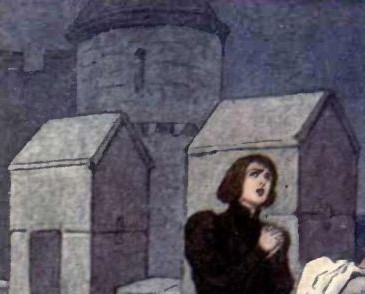
Joan was held prisoner in a tower at the castle of Beaurevoir. While in captivity, she learned that the town of Compiègne was about to be taken by the English, who were planning to massacre all of the people there, including women and children. In a desperate attempt to help the people of Compiègne, she tried to escape from the 60-foot (about 18 meters) tower. Tying a cord to something (it is not clear how she obtained the cord, or what it was tied to), she attempted to lower herself from the window, but fell in the process. Despite the height, Joan survived, and was found lying unconscious at the bottom of the tower.
Joan had tried to escape several times before. Therefore, after this escape, she was put under even stricter surveillance. Then St. Catherine spoke to her, chiding her for her actions and telling her to ask for God’s forgiveness. Joan obeyed the order and was shriven by a priest. St. Catherine also told Joan that the English would fail to take Compiègne; and that is what happened.
At her trial, Joan said that, hearing the news of the planned massacre at Compiègne, she had felt that she “would rather be dead than live on after such a destruction of good people.” The prosecutors used this statement to accuse her of attempted suicide.
What is the value of 10,000 pounds tournois?
“The love of money is the root of all evils.”
(I Timothy 6:10)
The value of the monetary amount that Joan was sold for can be estimated using the price of her armor (as stated in the court records) as a reference point.
According to one website, the suit of armor that Charles VII provided for Joan cost 100 écus, equivalent to 2,500 sols or 125 pounds tournois.
The website continues, “In comparison, this suit of armor cost twice as much as the cheapest equipment used, yet cost eight time less than the most expensive. (Suit of Armor | Joan of Arc | Joan-darc.info)
Simple calculation shows that the amount of money the Duke of Burgundy received from Cauchon was equivalent to 80 suits of armor of the kind worn by Joan, or ten suits of armor of the most expensive kind then made.
The Duke of Burgundy chose to acquire temporal wealth in this life. The gold he received was not only a payment for Joan. It must have been a payment from the devil, the god of this world (II Corinthians 4:4). it is he who controls the world’s wealth, betraying the God who teaches us to lay up treasure in heaven.
Bishop Pierre Cauchon (1371 – 18 December 1442), obsessed with power
The man responsible for Joan’s trial by the Inquisition and her execution by fire was Pierre Cauchon, Bishop of Beauvais. The English had offered Bp. Cauchon a post at the University of Paris, but in 1413 he was expelled from Paris for misconduct. Records indicate that Cauchon was a man of learning, full of ambition, and thoroughly determined to eliminate anyone who stood in his way.
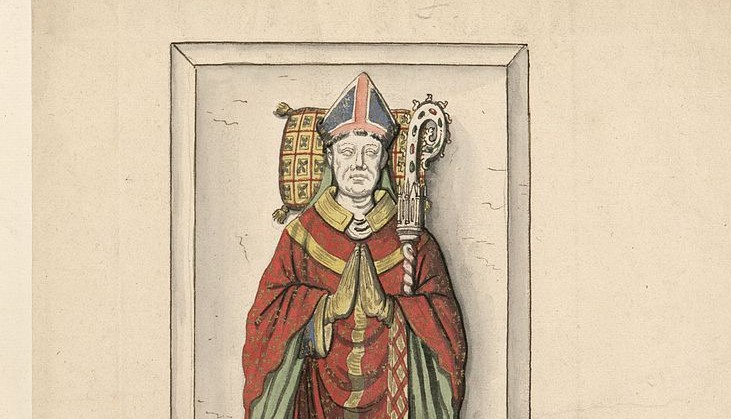
The diocese which Bp. Cauchon administered, known as Beauvais, was located near the border between the English and French territories. On account of its location, it was often ravaged by warfare. Cauchon, who sided with the Duke of Burgundy, and became his strongest supporter, had been given the diocese of Beauvais as a reward. Not satisfied with his good fortune, Cauchon sought to use his ties to the Winchesters to acquire the diocese of Rouen as well. His attempt failed. However, this did not mean that he gave up.
The liberation of Orléans by the French army, inspired and led by Joan, was a threat to Beauvais. In fact, Cauchon was forced to flee from Beauvais. Cauchon understood with hatred that Joan’s success was his misfortune.
It was therefore an unexpected stroke of luck for him that Joan happened to be captured in his own diocese. The English wanted to brand Joan a witch and prove that Charles VII was not God’s chosen king. As judge, Cauchon could condemn Joan as a witch. Not only that, but if he eliminated Joan, an enemy of England, he could see the possibility of becoming Archbishop of Rouen, a long-held dream.
Cauchon chose vice over virtue
Cauchon was a learned clergyman, so he could not have been ignorant of what constituted sin in the eyes of God. However, his desire for wealth and status was insatiable. As it is written: “A greedy man’s eye is not satisfied with a portion, and mean injustice withers the soul” (Sirach 14:9).
Although he was a bishop, it is clear that he sought his own gratification rather than the glory of God. Cauchon was known, even before Jeanne’s trial, as a man who preferred bribery to the pursuit of truth. Cauchon bought Joan from the Duke of Burgundy and sold her to the English. If he had not given Joan to the English, she would not, at least, have been burned.
The Duke of Bedford eagerly awaited Joan’s death
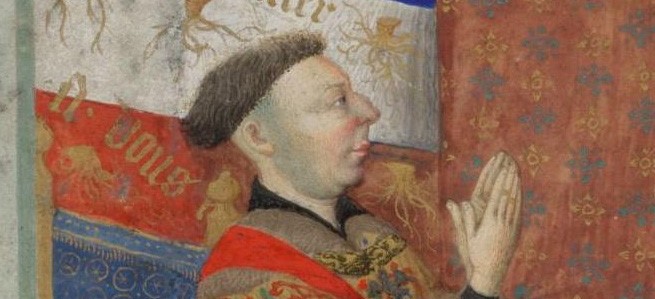
“ Churchman Peter Migietthe testifies that the English feared Joan of Arc more than a hundred soldiers, and that her very name was a source of terror to the foe.” (Fabré, Lucien. Joan of Arc. London: Odhams. 1955.)
Joan had many enemies. One of her most powerful enemies, the Duke of Bedford, seems to have recognized Joan’s charisma more than anyone else. He longed for Joan’s death. Because of Joan, the morale of the English army was lowered, anti-English sentiment was thickened, even in cities that were not hostile to the English, and the economy was hit hard.
Bedford’s faithful co-conspirator Cauchon investigated Joan’s background but was unable to make her out to be a witch. Bedford demanded that if the church could not burn Joan, it should give her to him. By now, her fate was already a foregone conclusion: she was to be burned.
Lord Bedford, who boasted a spectacular career
The miraculous nature of Joan’s military victories becomes apparent when one learns about her adversary, Lord Bedford, who was one of the most strategically adept military men of his time, whereas Joan was a peasant girl with no combat experience.
Bedford’s talents were not limited to warfare, but included politics as well: in 1415, and again from 1417-19, he was Lieutenant in charge of the English government, and together with Henry V, he sealed the Treaty of Troyes (1420), which recognized Henry’s claim to the throne of France. Bedford’s notable military victories included the Battle of Verneuil (1424), where, by defeating a Scots-French army, he ended Scottish involvement in France. During his lifetime, Bedford exercised at times the powers of a king, both in England and in France, and maintained the English hold on French territory.
After Joan had been burned, Bedford arranged for the coronation of Henry VI, which took place on December 16, 1431, at Notre Dame de Paris. However, the tide had turned against England. Bedford died in Rouen on September 14, 1435. A week later, the Treaty of Arras cemented the new Franco-Burgundian alliance against the English.
John, duke of Bedford – Wars of the Roses
Why did King Charles VII not try to save Joan?
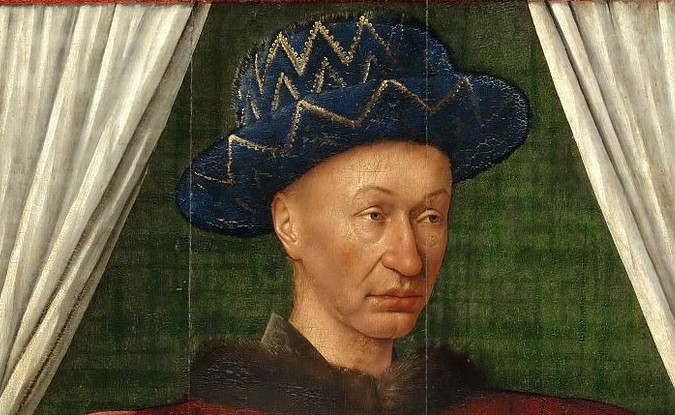
King Charles VII did not seem eager to help Joan in her predicament. Historians are divided as to whether his indifference to Joan was due to political shrewdness or mere ingratitude.
Perhaps Charles feared the possibility of starting a new war by trying to get Joan back from England. Or perhaps he was told by Joan’s enemies, such as La Trémoille, that he should not spare her. The ransom that King Charles was willing to pay was not an unusual amount. Charles appears to have been unwilling to pay a large ransom.
Joan had told Charles that she had only one year in which to help him. Perhaps Charles decided that Joan, being in captivity, had lost God’s favor and was not worth saving.
Charles demanded the truth about Joan’s trial
After Joan’s death, Charles VII demanded that she be given a rehabilitation trial, in order to (if possible) clear her name. Many believe that Charles’s real motive for this was a self-serving one, namely, to bolster his claim to the throne by showing that it had been approved by God.
On the other hand, it is said that Charles’s heart was broken when he heard that Joan had been executed. The indecisive and timid king must have had a sentimental side to his personality.
In 1453, having defeated almost all the English troops, Charles ended the Hundred Years’ War, and brought about a restoration of peace and order in France. Despite his accomplishments, however, he is most often remembered as the king who abandoned Joan of Arc.
Did Joan suffer from mental illness?
Regarding the mystical voice that inspired her to lead France to victory, her testimony is described as follows:
“Joan also said at her trial that her Voices were the Archangel Michael, Saint Catherine, and Saint Margaret, and further stated that: “I saw them with my bodily eyes, as clearly as I see you; and when they departed I used to weep, and wish that they would take me with them” (Gower, Ronald Sutherland, Lord. Joan of Arc. London: J.C. 1893.)
Regarding Joan’s voices and visions, which are a subject of controversy, some psychiatrists have suggested that Joan may have had schizophrenia, a type of mental illness that involves auditory hallucinations. On the other hand, they also acknowledge that she had a high level of intelligence, memory, and clarity, despite her lack of education. Those who analyzed this information and wrote about her were doctors experienced in mental illness.
Medical writer Clifford Allen reports that schizophrenia usually begins to manifest itself around the age of 15. In Joan’s case, she heard voices at age 13, which means that her symptoms appeared early, but this is by no means impossible. (The Schizophrenia of Joan of Arc – Medievalists.net)
Were Joan’s tactics skilled?
On the other hand, the many strange anecdotes about her are difficult to dismiss as psychosis or mere coincidence. Suppose the cause of the voices was schizophrenia. In that case, Joan would be the only example in history of a schizophrenic teenager leading an army to victory.
At Joan’s rehabilitation trial, the knight Sir Thibauld d’Armagnac, Sire de Thermes and Bailli de Chartres, testified that “in commanding troops, giving orders, arranging battles, and inspiring soldiers, Joan of Arc was as competent in the art of war as the most accomplished captains.” It is hard to explain logically how Joan, with no combat experience, could have known how to fight in a way that would surprise an experienced soldier, especially when it came to artillery.
Death of a Blasphemous Soldier.
“You shall not take the name of the LORD your God in vain; for the LORD will not hold him guiltless who takes his name in vain” (Exodus 20:7).
There is no clear answer as to the true meaning of the voices. What is clear is that Joan followed those voices and made accurate predictions in many battles. Many people testified at the trial; one interesting anecdote about her mysterious foreknowledge was told by a certain priest named Pasquerel.
Fr. Pasquerel told how, when Joan was on her way to enter a certain castle, a soldier used some coarse language as he saw the young Maid pass by — some rude remark. Turning to him, the Maid rebuked him for blaspheming, and added that he had denied his God at the very moment in which he would be summoned before his Judge, for that within an hour he would appear before the heavenly throne. The soldier was drowned within the hour. Such is the incident as told by Fr. Pasquerel.
From the testimony of Fr. Pasquerel, we learn of Joan’s foreknowledge, which we believe was taught to her by the voices. Sometimes, people can foresee tragedies involving family members and other people close to them. Joan, however, clearly foreknew of the death of a soldier who was a complete stranger.
It was not unusual at that time for soldiers to use the name of God lightly. Joan, however, was very strict in her criticism of such casual blasphemy. Many people today, like the soldier in this anecdote, probably do not realize the consequences of using God’s name so carelessly.
An anecdote from the Inquisition
Joan’s trial began on Monday, February 21, 1431. Lent, which is a time of fasting and prayer, often begins in March, but in 1431 it began on Wednesday, February 23. What kind of Lenten prayers did Joan offer, aligning her heart with the Passion of Jesus?
God was indeed protecting her. At the trial, Bishop Cauchon and the inquisitors laid traps to ensnare Joan. Soon they would discover that Joan was not easily trapped.
In the name of the devil
“Jesus said to the Pharisees, “You are of your father the devil, and your will is to do your father’s desires. He was a murderer from the beginning, and has nothing to do with the truth, because there is no truth in him. When he lies, he speaks according to his own nature, for he is a liar and the father of lies” (John 8:44).
Once, during the trial, Cauchon witnessed Joan being counseled by La Fontaine (who served as her instructor) and two Dominican friars. Cauchon, upon seeing that, immediately realized that they intended to interfere with his trickery, and lost himself in anger. He shouted at them, “In the name of the devil, be silent!” Not only that, but he also took note of Joan’s appeal to the Pope and the Synod, had it struck from the record, and pretended that it had never happened.
The two Dominican friars who had given Joan friendly advice were saved by the tact of their superior. But La Fontaine fled from Rouen before the trial was over.
The devil must have been at work through Cauchon. If the thoughtless utterance of God’s name is a denial of God, then giving orders in the name of the devil must be the most dreadful blasphemy of all.
Joan’s answer astonished the Inquisition officials
“Behold, I send you out as sheep in the midst of wolves; so be wise as serpents and innocent as doves” (Matthew 10:16).
Joan’s enemies, led by Cauchon, did everything possible to get her to testify against herself and admit to some kind of heresy; moreover, Joan was not even given a formal defense attorney. Nevertheless, her answers surprised the inquisitors, who were well-versed in all things theological.
For example, Cauchon asked Joan, “Do you think you are in God’s favor — in a state of grace?”
Joan replied, “If I am not, may God place me there; if I am, may God keep me so. If I knew I was not in God’s grace, I would be the saddest creature on earth.”
This answer astonished the inquisitors, for Cauchon’s question concealed a trick that a simple country girl like Joan could never have known.
Cochon’s question trap
“They set a net for my steps; my soul was bowed down. They dug a pit in my way, but they have fallen into it themselves.” (Psalm 57:6)
According to the Church’s teaching, for a person to affirm absolutely that he or she is, and shall remain, “in a state of grace” would be the sin of presumption. Thus, if Joan affirmed as much, the inquisitors could say that she was committing a sin, i.e., she was inclined to evil. On the other hand, if she denied that she was in a state of grace, she would be admitting that she was an insufficiently repentant sinner. Either answer would mean that Joan was acting in a state of sin. In other words, they could have ruled that it was the devil, not God, who was leading her.
The Law of Moses and Joan’s male attire
A woman shall not wear anything that pertains to a man, nor shall a man put on a woman’s garment; for whoever does these things is an abomination to the LORD your God. (Deuteronomy 22:5)
Cauchon was accusing Joan of heresy, using a litany of false evidence and charges that were completely contrary to her testimony. Fearing, perhaps, that the case against Joan was rather weak, and wanting to declare her a heretic at any cost, he accused her of wearing men’s clothes, citing the Law of Moses in Deuteronomy 22:5.
Not only that, Joan’s enemies had recourse to horrific machinations in order to get her to sign a statement to the effect that she had never had any visions or revelations, that she had lied about acting at God’s command, and that she was a blasphemer and a heretic.
The Inquisitors planned to torture her, on the pretext of thereby saving her soul. To strike fear into her heart, they showed her the instruments of torture, but she would not yield.
The records of Joan’s trial by the Inquisition and her posthumous restoration trial provide a glimpse of her simple and straightforward personality. There are also numerous anecdotes detailing the family, the voices, and the miracles attributed to Joan. (Unfortunately, we cannot present all of them here.) Many anecdotes demonstrate Joan’s holiness, as well as the fact that her holiness was never recognized by Cauchon and the inquisitors.
Blasphemy of Communion
One of the accusations made against Joan by her judges was that it was equivalent to blasphemy for a woman to receive holy communion while dressed in male attire.
However, it is not clear whether the law of Moses regarding male and female clothing is actually binding on the Christian conscience. To put it briefly, Jesus Christ, being God, used his divine authority to fulfill the ancient covenant with Moses, and to make a new Covenant. In so doing, he upheld all of the moral laws of Moses, but not the civil and ceremonial laws, which he rendered obsolete.
Ritual law considered outdated
The laws about clothing are usually considered by theologians to belong to the obsolete ceremonial laws. That is why the inquisitors accused Joan not merely of cross-dressing, but of receiving the Eucharist while so dressed. By bringing up the Eucharist, they were able to charge her with blasphemy.
Moreover, the passage in Deuteronomy about men’s attire is not well known, and would have been difficult to find without diligent searching. We can see clearly that Cauchon and the Inquisition took time and effort to relentlessly hunt down their prey.
Image: The Trial of Joan of Arc, by Louis Maurice Boutet de Monvel
Sources:
Fabré, Lucien. Joan of Arc. London: Odhams. 1955.
Gower, Ronald Sutherland, Lord. Joan of Arc. London: J.C. 1893.

